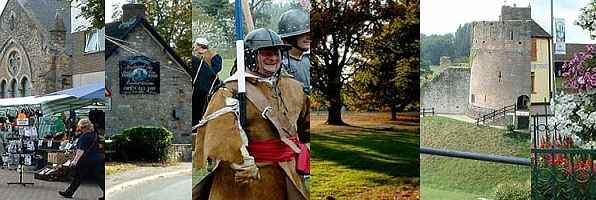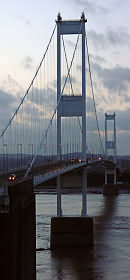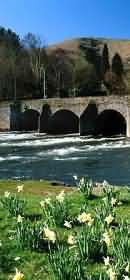
The Local Time is Friday, 26-Apr-2024 01:56:07 CEST
Caldicot Tourist Information and Travel Guide |
|
|||
| YOU ARE HERE: Main Home Page > Monmouthshire > Caldicot |
|
|
Caldicot in the County of Monmouthshire
|
|||||
 |
|||||
With the Roman Conquest the centre of local activity shifted from Llanmelin and Sudbrook to the Roman town of Venta Silurum - Caerwent. At that time the Neddern was quite a substantial waterway and it is likely that Roman trading vessels sailed up the river to Caerwent. Caldicot itself would, as in the Iron Age, have been a small Severnside agricultural and fishing community trading with the larger local settlement. Not all manufactured goods had to be obtained from outside, however. The discovery of a number of kilns near the site of Durand School, shows that coarse, gray and black pottery was produced in the village during Roman times. The Normans were soon able to establish control over the lowland parts of Gwent, including Caldicot. These lands were held by William Fitzosbern, King William's cousin. However, William Fitzosbern died in 1071 and his possessions in Gwent were inherited by his son, Roger. When, in 1074, Roger joined a rebellion against the King his lands were confiscated. The manor of Caldicot was given to Durand, the Sheriff of Gloucester. The Doomsday Book, compiled in 1086, records, 'Durand the Sheriff holds of the King, one land, in Caerwent, called Caldicot. He has in demesne there 3 ploughs, and 15 half villeins, and 4 bondmen, and one knight. All these have twelve ploughs. There is a mill worth ten shillings.' In 1158 the manor of Caldicot passed to Humphrey de Bohun III, Earl of Hereford. He was responsible for building the stone keep and curtain walls of the present-day Castle. The de Bohun family held Caldicot for over two centuries. In 1376 the manor, along with 70 others, passed to Thomas Woodstock, third son of King Edward III, when he married Alianore de Bohun. When Queen Victoria came to the throne in 1837, Caldicot had a population of around 450, virtually all of whom were engaged in farming or in trades serving the agricultural community. In many ways the village retained its Medieval character, being dominated by the Castle and the Church. A tithe barn stood behind the Church. There was no school, the only formal education being provided by a widow in her cottage. She was paid by a local charity to teach poor children to write and to read the Bible. In 1847, however, St. Mary's Church School opened, largely as a result of the efforts of the vicar, Edmund Turberville Williams. In 1850 Caldicot entered the 'Railway Age' a development which was to fundamentally change the nature of the village and to form its character for the next century and more. The opening of the South Wales Railway brought London, Cardiff, even Ireland within relatively easy reach, although the nearest station was at Portskewett (Caldicot station was not opened until 1936). |
|||||
|
|||||
| BACK TO TOP | |||||
|
|||||
Caldicot in the County of Monmouthshire |
|||||
| This page last modified Tuesday, 28-May-2019 11:02:42 CEST | |||||

